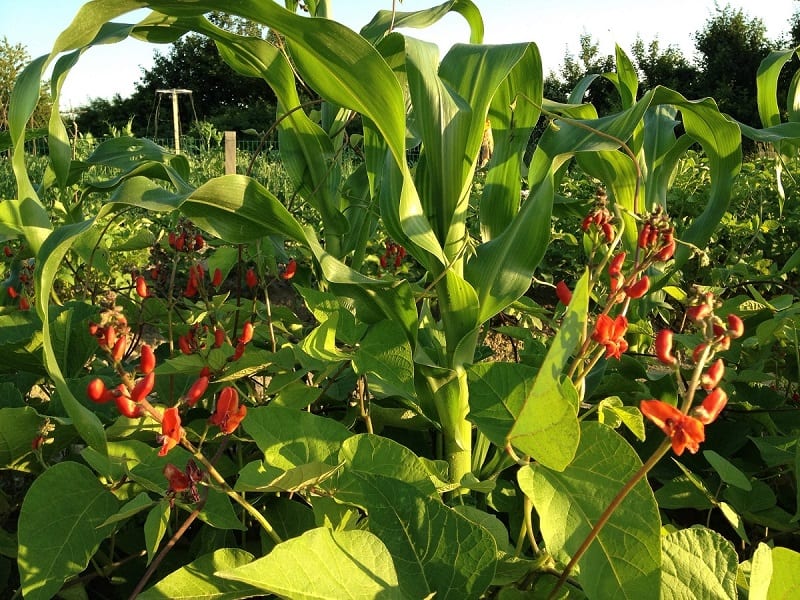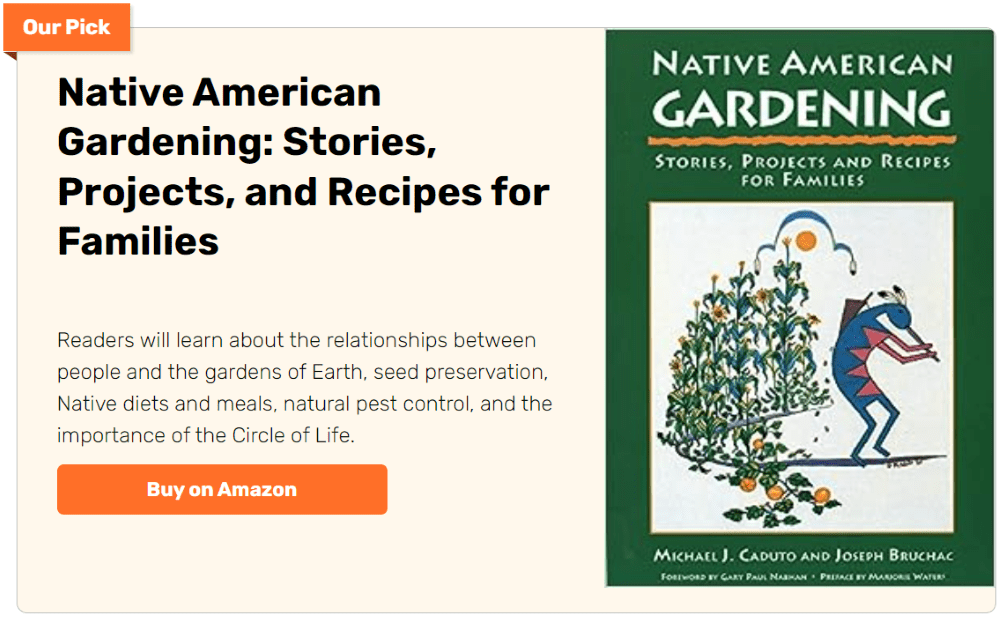Last Updated on August 6, 2023 by teamobn

(Photo: Joachim Quandt/Flickr)
For many Native American tribes, three seeds – corn, beans, and squash – once represented hope in the struggle to endure in a brutal, unforgiving environment. For centuries, the Three Sisters Garden was the center of Native American agriculture, community life, and culinary traditions – and for good reason.
When planted together, the three sisters garden work to help one another thrive and survive.

Corn provides tall stalks for the beans to climb, helping the latter avoid competition from the squash vines below.
The beans provide nitrogen to fertilize the soil even as they stabilized the tall corn during heavy winds.
The large leaves of squash plants meanwhile provided ground cover, preventing weeds while allowing the soil to retain moisture.
Raising the Three Sisters Garden
Contents
There is no one right way to grow a three sisters garden. Each Native American tribe had its own way of growing the crops together. You’ll probably run into cycles of trial and error over several seasons to perfect a process that works for the growing conditions in your area.
The key lies in finding the right spatial configuration and the right timing for sowing each type of seed. The steps below outline the general three sisters garden process and principles.

Sister Corn
Pick sunny spot with well-draining soil for your three sisters garden patch. Build a circular mound of soil about 5 feet in diameter. Mix compost and soil amendments into the soil as needed.
Rake the top of the mound into a flat planting area with tapered sides. The finished bed should be at least 6 inches tall.
Plant the corn first to allow the crop a head start. Sow the corn seeds eight inches apart in a 3-foot diameter circle on top of the bed.

Sister Bean
You can sow the bean seeds once the cornstalks reach 6 to 8 inches tall. The bean seeds go inside the circle of corn. Plant each bean seed about 3 inches from each cornstalk. When the beans begin to sprout tendrils, the corn will be tall enough to support them.
Direct each vine toward the nearest cornstalk. You can tie them to the stalk with a piece of twine to ensure they clamber up the stalk rather than along the ground.

Sister Squash
Plant Sister Squash seeds one week later after the beans have emerged. You do not want the large squash leaves to shade out young corn and bean seedlings before they have time to establish.
The squash seeds go outside the circle of corn – near the edge of the circular bed. The seeds should be about 12 inches from the closest cornstalks. You should allow about 24 inches between each squash seed.
You can start as many circular mounds as you like, but permit sufficient space between each one. Remember, the squash will quickly spread beyond its bed to cover an area roughly 10 feet in diameter.
Water and weed the beds regularly. The beans and corn will mature first. Step carefully among the squash vines to harvest them as they ripen.

Native American Gardening Tradition and Expertise
Utilizing corn, beans, and squash together in your garden today draws upon thousands of years of Native American agricultural traditions and expertise.
The three sisters garden was central to the diet of many Native American tribes, who ascribed great cultural, even spiritual, significance to the relationship between the species.
Nutritionists have since found other beneficial traits in the triad. Eaten together, corn and beans are an ideal vegetarian meal containing all the amino acids of a complete protein. The squash adds extra minerals and vitamins and some sweetness to the table fare.








